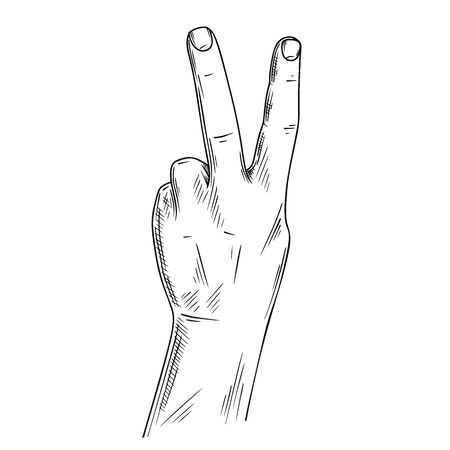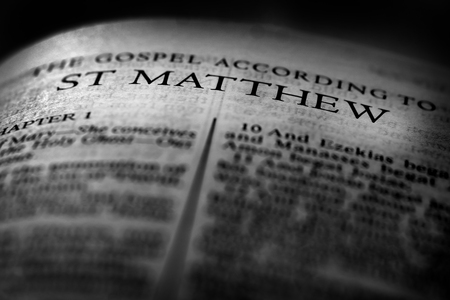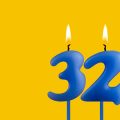1. The Origins and Arrival of Palmistry in America
Palmistry, also known as chiromancy or palm reading, traces its roots back thousands of years to ancient civilizations such as India, China, and Egypt. This mystical practice was used to interpret a person’s character and predict their future by examining the lines and shapes of their hands. Over the centuries, palmistry traveled across continents, carried by travelers, traders, and spiritual seekers.
From Ancient Traditions to American Shores
The journey of palmistry to America began in earnest during the 19th century. As waves of immigrants arrived from Europe—especially Romani people, who were closely associated with fortune-telling—the art of hand reading found fertile ground in the New World. Americans’ curiosity about the unknown and fascination with the mystical made palmistry a natural fit for a country built on dreams and possibilities.
Palmistry’s Cultural Adaptation
As palmistry settled into American culture, it transformed to match local beliefs and values. It shifted from being just a tool for fortune-telling to a form of entertainment at fairs, carnivals, and social gatherings. In the early 20th century, palm readers became popular fixtures at Coney Island sideshows and even private Hollywood parties, reflecting both skepticism and intrigue among Americans.
Key Milestones: Palmistry’s American Journey
| Time Period | Event/Trend | Cultural Impact |
|---|---|---|
| Late 1800s | Palmistry introduced through immigration | Seen as exotic; linked with traveling Romani communities |
| Early 1900s | Palm reading at carnivals & fairs | Became mainstream entertainment; sparked curiosity |
| 1920s-1930s | Hollywood celebrities consult palmists | Helped legitimize palmistry in pop culture circles |
| Mid-20th Century | Palmistry books published in English | Allowed wider access; more “scientific” interpretations emerged |
| Today | Palmistry apps & online readings grow in popularity | Palmistry adapts to digital age; remains part of American folklore |
This fascinating history shows how palmistry evolved from an ancient tradition into a distinctly American phenomenon—adapting along the way while always keeping its mysterious charm.
2. Hollywood’s Fascination with Hand Reading
The Allure of Palmistry in Tinseltown
Hollywood is a place where dreams, destiny, and drama all blend together—so it’s no surprise that palmistry, or hand reading, has found a special place in the entertainment capital of the world. From classic black-and-white films to modern blockbusters, the art of reading palms has been featured on the big screen, adding an air of mystery and intrigue to many stories.
Palmistry in Classic and Modern Films
Movies have long used palm reading as a way to introduce fate, suspense, or even comic relief. In classic cinema, scenes featuring fortune tellers peering at stars’ hands are iconic. More recently, hand reading pops up in both comedies and thrillers, showing that this mystical art still captivates American audiences today.
| Film Title | Year | Palmistry Scene Description |
|---|---|---|
| The Palm Beach Story | 1942 | A humorous take on fortune-telling during a romantic twist. |
| Now and Then | 1995 | Teenagers seek answers about their futures from a local psychic. |
| L.A. Confidential | 1997 | Palmistry adds suspense to a film noir narrative. |
| The Curious Case of Benjamin Button | 2008 | Palm reading hints at the main character’s unusual journey through life. |
Celebrity Practitioners and Enthusiasts
It’s not just movie plots that feature palmistry—many celebrities themselves have shown interest in hand reading. Some stars turn to palmists for insight into their careers or personal lives, while others have fun with it at Hollywood parties. Here are a few notable names linked to the world of palmistry:
- Marlene Dietrich: Known for seeking advice from famous palmists during her golden years in Hollywood.
- Shirley MacLaine: An actress who openly discussed her curiosity about metaphysical arts, including palmistry.
- Demi Moore: Rumored to enjoy hand readings for fun and reflection with friends.
Tinseltown’s Ongoing Fascination with Fate
The fascination with palmistry fits perfectly with Hollywood’s love for stories about destiny and transformation. Whether it’s characters discovering their fate on screen or real-life stars looking for guidance backstage, hand reading remains woven into the fabric of American pop culture. As trends shift and new generations arrive in Hollywood, the mystique of palmistry continues to capture imaginations in the City of Angels.

3. Reading Between the Lines: American Politicians and Palmistry
When it comes to palmistry, or hand reading, most people might picture fortune tellers at street fairs or celebrities in Hollywood. However, the fascination with reading palms has also found its way into the world of American politics. Over the years, several US political figures have either consulted palmists or had their hands analyzed in public, sparking both curiosity and controversy.
The Role of Palmists in Political Campaigns
It may sound surprising, but some politicians have turned to palmists for advice before making big decisions or running for office. The reasons vary: some seek reassurance, others hope for a confidence boost, while a few simply enjoy the novelty. These moments often grab media attention and sometimes shape how voters see these leaders.
Anecdotes from the Political Arena
| Politician | Palmist Involvement | Public Reaction |
|---|---|---|
| Ronald Reagan | Nancy Reagan reportedly consulted astrologers and palm readers for guidance during his presidency. | Media coverage ranged from amusement to concern about decision-making influenced by mysticism. |
| Hillary Clinton | During her campaign, a viral photo showed her getting her palm read at a community event. | Some saw it as lighthearted outreach; critics claimed it was frivolous or superstitious. |
| Franklin D. Roosevelt | Rumored to have had his palm read privately before critical moments in his presidency. | Stories contributed to his image as someone open to unconventional advice. |
How Palmistry Shapes Public Perception
When stories about politicians and palmistry hit the headlines, they can influence how voters perceive those candidates. For some Americans, a politicians willingness to try hand reading makes them seem relatable or open-minded. For others, it raises doubts about their seriousness or judgment. Media coverage often amplifies these reactions, especially when images or soundbites go viral during election seasons.
Palm Reading as a Campaign Tool?
In certain cases, campaign teams have even used palm reading sessions as a way to connect with voters at local fairs or cultural festivals. These moments become fun photo opportunities and icebreakers, helping candidates appear approachable and engaged with diverse communities. However, such tactics can backfire if opponents use them to question a candidates rationality or priorities.
The Ongoing Debate
The intersection of palmistry and American politics remains a quirky yet persistent topic in pop culture conversations. Whether taken seriously or just as entertainment, the stories of politicians dabbling in hand reading continue to spark debate about leadership qualities and the role of personal beliefs in public life.
4. Pop Culture Craze: Palmistry in Media, Merchandise, and Social Trends
Palmistry, or hand reading, has found a unique place in American pop culture over the decades. What was once considered a mystical or fringe practice is now a mainstream fascination, fueled by Hollywood glamor, magazine features, and even TikTok trends. Let’s dive into how palmistry became a trend across different areas of American life.
The Media Spotlight: From Magazines to TV Shows
In the early 20th century, palmistry columns began popping up in popular magazines, offering readers quick advice based on their hand lines. By the 1960s and ‘70s, talk shows and sitcoms would feature quirky segments with celebrity palmists reading the hands of stars or hosts. Today, reality TV and late-night shows often bring on palm readers for fun, light-hearted segments that capture viewers’ curiosity.
Palmistry in Social Media: Influencers and Viral Content
With the rise of social media platforms like Instagram, YouTube, and TikTok, palmistry has become more accessible than ever. Influencers create content ranging from basic tutorials to comedic skits about love lines gone wrong. Hashtags like #PalmReading and #HandReading have racked up millions of views, making it easy for anyone to join the conversation or try their hand at palm reading.
Popular Social Media Platforms for Palmistry Content
| Platform | Type of Content | Audience Engagement |
|---|---|---|
| Infographics, Short Videos, Stories | High (likes, comments) | |
| TikTok | Viral Challenges, Skits, Quick Tips | Very High (shares, duets) |
| YouTube | Long-form Tutorials, Interviews | Moderate (subscriptions) |
| Groups, Live Readings | Community-focused (discussion threads) |
The Booming Business of Palmistry-Themed Products
Palmistry’s popularity has also inspired a wave of themed merchandise. From T-shirts printed with palm diagrams to mugs, phone cases, posters, and tarot-inspired home decor—retailers have jumped on the trend. Even luxury brands sometimes release limited-edition items featuring palmistry motifs as part of their “mystical” or “spiritual” collections.
Examples of Popular Palmistry Merchandise in America:
- Palmistry guidebooks for beginners found in bookstores and gift shops
- Jewelry with hand-shaped pendants engraved with life lines or heart lines
- Palm-reading kits including illustrated cards and hand models for practice at home
- Decorative prints for dorm rooms or living spaces showing classic palmistry maps
- Mugs and T-shirts with funny sayings about fate or fortune told by your hands
Palmistry as a Social Trend: Parties and Events
Hand reading isn’t just an online phenomenon; it’s also become a go-to activity at parties, bachelorette gatherings, and even corporate events. Professional palmists are booked to entertain guests with mini-readings, adding an element of mystique to celebrations. Some people learn basic techniques to impress friends at get-togethers or use smartphone apps that analyze palm photos for instant readings.
5. Contemporary Attitudes: Science, Skepticism, and the Future of Palm Reading
Palmistry, or palm reading, still captures the American imagination, but its place in society has shifted over time. In Hollywood’s golden age, stars like Mae West and Marilyn Monroe were rumored to have their palms read for career advice or personal insight. Politicians sometimes turned to palmists for guidance—or simply for fun at charity events. But what about today? How do Americans really feel about palmistry now?
Believers vs. Skeptics: The Ongoing Debate
Opinions about palmistry in the U.S. are divided. Some people see it as a meaningful spiritual practice or a tool for self-reflection. Others dismiss it as pure entertainment or even pseudoscience. Here’s a quick comparison:
| Group | View on Palmistry | Common Reasons |
|---|---|---|
| Believers | See value in hand reading | Spiritual growth, tradition, self-discovery |
| Skeptics | Doubt its scientific basis | Lack of evidence, preference for science |
| Casual Fans | Treat it as entertainment | Fun at parties, pop culture curiosity |
The Role of Science and Technology
Modern science generally does not support palmistry as a predictive tool. Studies haven’t found reliable links between hand lines and personality or future events. However, some psychologists believe that the ritual of palm reading can help people reflect on their lives or talk about personal hopes and fears in a new way.
Palmistry in the Digital Age
The rise of social media and smartphone apps has brought palmistry to younger generations in creative ways. Now, you can upload a photo of your hand to an app and get an instant reading—no crystal ball required! TikTok and YouTube feature influencers who blend traditional hand reading with astrology or modern self-help advice.
A New Generation’s Take on Palm Reading
Younger Americans often approach palmistry less as fortune-telling and more as a form of mindfulness or self-expression. For example:
- DIY palm reading guides are popular at sleepovers and parties.
- Hand tattoos inspired by palm lines have become trendy among artists and musicians.
- Palmistry-themed jewelry is sold at music festivals and online shops.
This reimagining keeps palmistry alive—not as rigid prophecy, but as a flexible, creative tradition that adapts to changing times.


